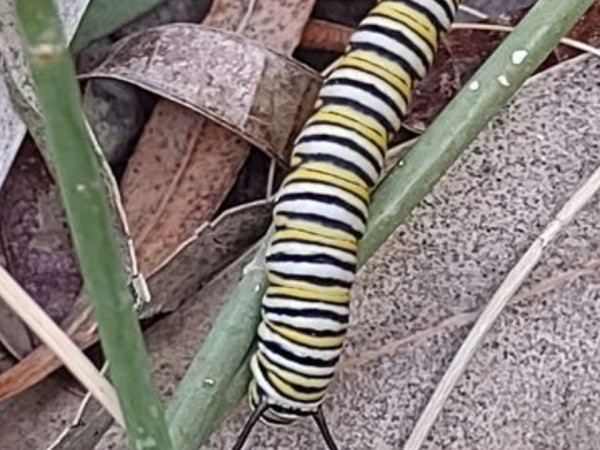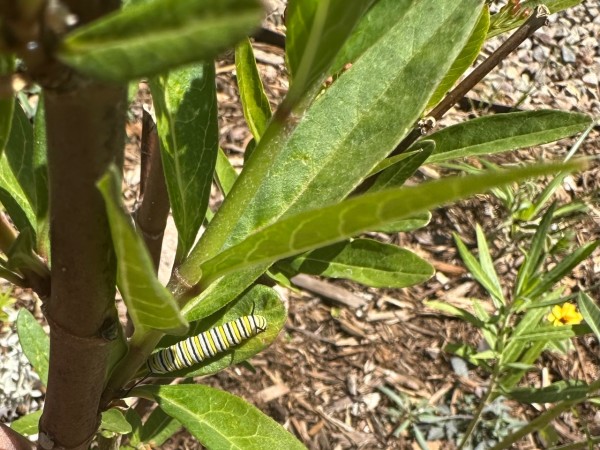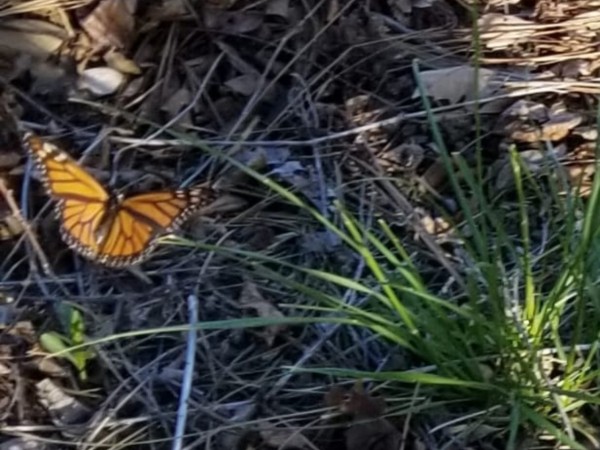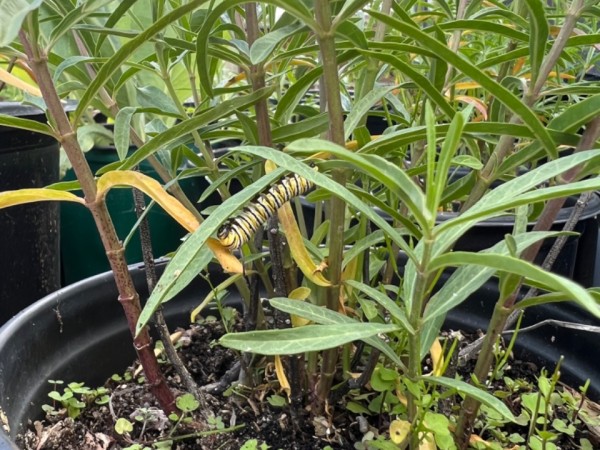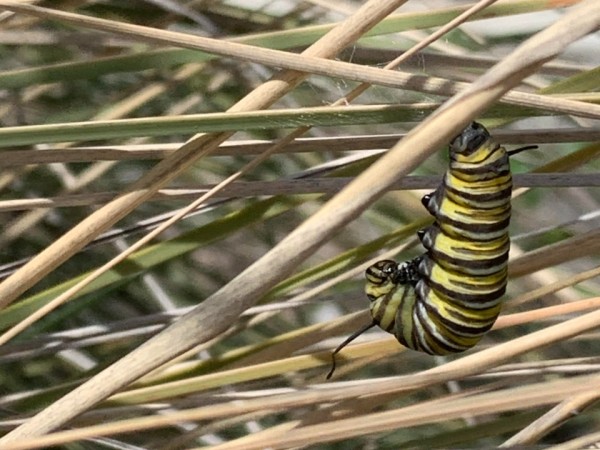Letter From Gail Morris: Western Monarch Spring 2023 Report #9
Western Monarchs Update
Finally! After weeks of concern over their absence, monarchs appear. Many monarchs are now visiting gardens in Southern California and also in the Southwest as a new generation ecloses and spreads their wings to continue the journey north and east in the region. A surprise early first monarch sighting in Oregon offers a sign of hope as the spring migration surges to the finish line with summer breeding grounds within reach. Monarchs are now being reported in California, Arizona, and Oregon as they expand the range.
Monarch & Milkweed Sightings
Thank you to everyone who reported details of their monarch sightings and photos this week! Here is a sample of reports shared:
Dorothee in Lake Havasu City, Arizona, on April 24, reported one monarch. “Rotary Park Butterfly Garden in Lake Havasu City, AZ.”
Darleen in Gilbert, Arizona, reported one monarch larva April 26. “Female monarch visited my backyard on April 11, 2023.”
David posted the first monarch sighting in Oregon on April 28. “One female in pollinator garden visiting new 4 inch milkweed growth. Sighted by Laurel Banke of Thistlecroft Vineyard/Eliana Wines.”
Lisa in Glendora, California, reported 4 monarchs on May 2. “Three 3rd-4th instar Monarch caterpillars on potted Tropical Milkweed. One 3rd-4th instar in potted Narrowleaf milkweed. (Pictured) All sightings at Monarch Waystation #29927.”
Joyce reported 52 monarch larvae in Mountain View, California, on May 7. “Amazed to find several remote milkweed plants at Google that sprung up last spring full of larva, mostly late stage. Most were feeding, (1) was hanging from the side of a bollard, (1) from a grassy plant ready to transform. It was 66 degrees and mostly sunny. Unlike the other Milkweed there were no signs of wasps on these.” Joyce also counted 12 adult monarchs. “We saw (12) monarch butterflies at Google today, all were flying about. Roughly half seemed to be brightly colored and the rest older and faded. They were too active to obtain any photos.”
Report from the Field
Diana Magor shares her report this week from Santa Cruz, California:
“A few (1-2 per warm sunny day) adult males continue to be seen in my garden, most nectaring on Echium (Pride if Madeira) and in the Westside Santa Cruz neighborhood. All are currently faded, so likely overwintering survivors. I have not observed a single female, egg, larva or pupa outside of the Santa Cruz overwintering sites this calendar year, in my garden or on my many potted milkweeds, (tropical, narrow leaf and heartleaf). Highly unusual and alarming. I can only hope that a few females survived the storms and are ovipositing in the Silicon and Central Valleys, including possibly at Google Plex. Several females were observed late in the overwintering season at Pacific Grove.
Milkweeds: the heartleaf milkweeds at Carquinez Strait have just started to flower (photo attached) and those near Lake Berryessa started emerging in January but were a little later than last year.
95% of the heart-leaf milkweeds I planted a year ago (March 2022) in deep containers have re-emerged. They started emerging Jan 17, 2023 (those are now 9” tall). The most recent one emerged about 2 weeks ago. Some of the ones raised by our team have been given to 2 groups in the Bay Area and are being planted out as we speak.
The potted narrow leaf plants have been up since March 1 and are now large. The potted tropicals died back to almost bare stems this winter, and are now recovering.”
Unusual Weather for the West?
The National Weather Service is calling for an unusual Spring weather pattern to set up in the Southwest this week that may influence the monarch migration. Cooler than normal temperatures midweek will be followed by a chance of rain and even snow in the higher elevations over the weekend and early next week. Spring is typically dry with warming temperatures. Depending on how this weather system sets up, we will all have to watch and see what will develop this May across the West. Let us know what monarch activity you see!
Call for sightings
Look for monarchs and milkweeds! Despite a much healthier overwintering monarch population, the key to the summer breeding season will be reflected in the progress of monarchs the next few weeks. Your reports are critical to our understanding of this season’s migration. Urgently needed are reports of sightings of emerging milkweeds and monarchs in any life-stage. Provide as much information as you can such as weather conditions (it’s okay to estimate). Your detailed description of can include, but is not limited to, the monarch’s gender, wing condition (worn or excellent and everything in between), their type of activity and, if known, the type of milkweed or flowers if they are nectaring. Be sure to check milkweeds for eggs, larvae, or pupae if you are lucky to find them. We look forward to your reports!
Thank You!
Gail Morris is the Coordinator of the Southwest Monarch Study (www.swmonarchs.org), a Monarch Watch Conservation Specialist, and the Vice President of the Monarch Butterfly Fund, the Central Arizona Butterfly Association, and the Western Monarch Advocates. The Western Monarch Population News is based on comments provided to Gail Morris. We hope to increase the number of sightings and therefore photos and comments entered into Journey North. We rely on the volunteers who communicate regularly with Gail and who agree to participate in our effort to increase awareness of the population of Western Monarchs. You can reach Gail at gail@swmonarchs.org

